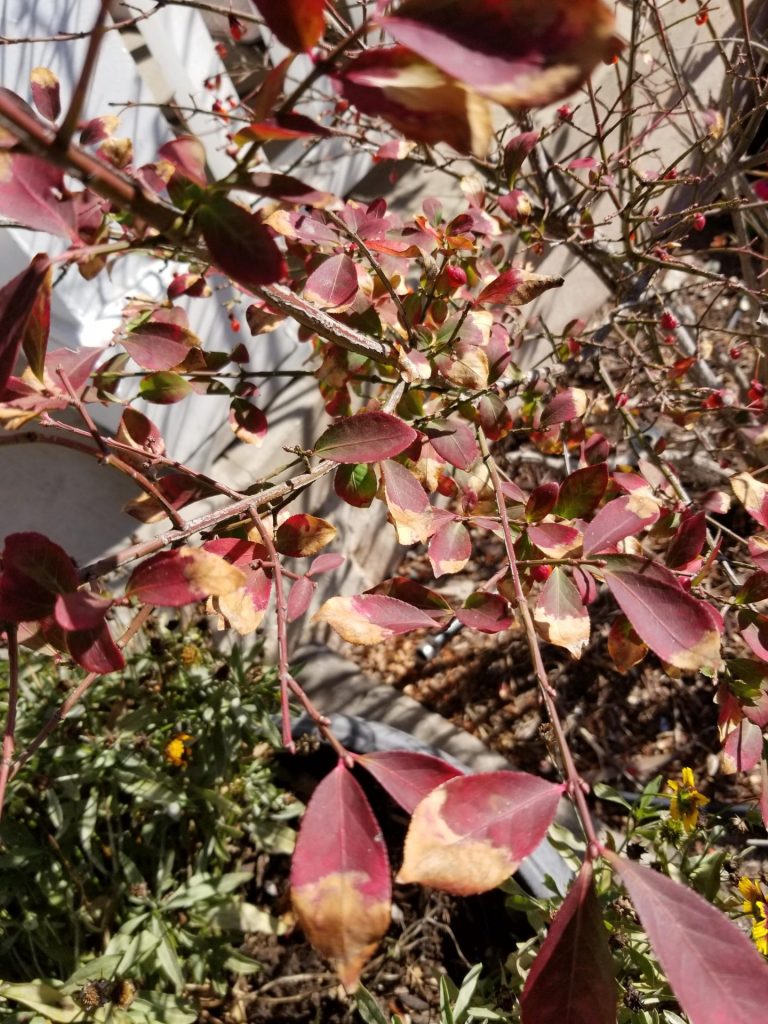
Hi,
I am resending this since the picture I upload was not good.
I have two burning bush in my front flower bed, they are about 7 feet apart. One is very healthy, the other one has sicky brown leaves look. It was started 2020 summer. I live in Brampton (zone 5b). I did scrp the bark as instructed. It is green. The plant is about 3 feet tall. I forgot how old it is. I would like to send you 2 more pictures. But the website only allow one.
Thanks
Ben
Ben, I cannot see the cause of your issue from the photo. However, there are a few things that come to mind.
- Burning bush (Euonymus alatus) is susceptible to Verticillium Wilt. However, that disease usually presents as sudden die-back of one large branch, or 1/2 of the plant, progresses rapidly and often results in the death of the plant. You are saying that the wood is healthy, and the leaves are dead all over the plant, so I doubt this is the problem. More likely, the plant has been infested by insects.
- Spider mites are the most common insect for E. alatus. In this case, using a magnifying glass you may be able to see many tiny white spots in clusters on the undersides of the leaves. They also create webbing around the leaves which might be visible. They can be controlled with a blast of water from your hose.
- Stress can also cause leaf issues. One source of stress is compacted soil. This could be at least part of the problem, since the bush is surrounded by paving in a very heavily trafficked area at the front door. Soil with good structure has about 50% of its volume in pore space or empty space between soil particles. Water and air can get into these pore spaces, and roots can grow into these spaces. Compaction destroys these pore spaces and pushes the air out of the soil. Air is essential for healthy roots. Here’s a good test: Near the shrub, push a straightened coat hanger into the soil until it stops going in without bending (this will be the level at which soil compaction starts), and measure how far it went in with a ruler. If you do not have at least 8-10 inches of non-compacted soil, the plant will suffer.
Finally, you might not know that E. alatus is considered to be an invasive plant by the Ontario Invasive Plant Council. It produces a prolific amount of berries and the seeds can germinate both in sunny and shady conditions. Birds aid in seed dispersal. It also reproduces vegetatively by root suckering. It is of particular concern when it is in a garden next to open woodland. Here is a link to a publication from the Ontario Invasive Plants Council that provides more information and suggested alternative plants, if you would like to consider replacing your shrubs:
October 30/21

